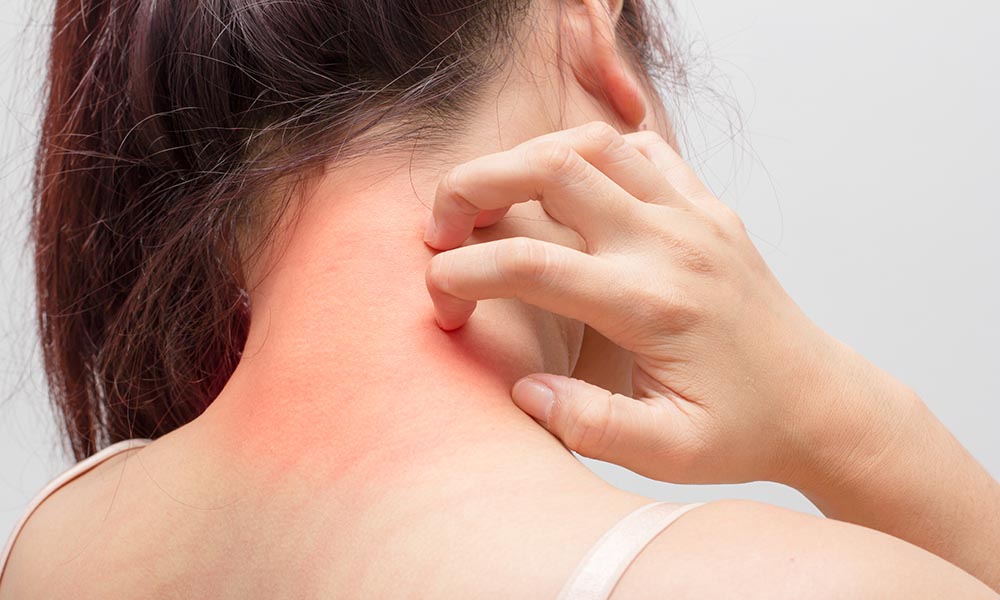Itchy skin can be a great deal in our life. Itchy skin can be from mild that we can ignore or scratched lightly or become severe that it is too painful or be scratched till wounded. In the world of medicine, itchy skin can occur anywhere on the body. One of the common diseases leading to itchiness is tinea corporis. In this article, we will be learning about tinea corporis and its treatment.
Tinea corporis is defined as skin diseases caused by infection of dermatophytes fungi. Dermatophytes fungi are fungi that are capable of living on keratinized tissue. Keratinized tissue such as skin, hair and nails, can be affected by tinea corporis. Tinea corporis can be found worldwide but it is easily found in hot humid climates such as our own country. Tinea corporis can affect everyone of all ages including the newborns. However, there are certainly risk factors which makes a person is more susceptible to wards tinea corporis such those with certain diseases such as severe dry skin issues (xerosis or ichthyosis), excessive sweating (hyperhidrosis), chronic disease such as diabetes mellitus and those with low body immune system (immunodeficiency). People living in crowded households, keeping house pets such as cats or dogs and previous infections or infections among the household members can increase risk for tinea corporis.
The most common way tinea corporis spreads is through close contact with others such as skin-to-skin contact occurring from using the same changing room or using the same personal item such as towel. In some cases, direct contact with a patient with tinea capitis (fungal infection of scalp hair) can result in tinea corporis. Infections may also occur when the skin is inContact with skin from the soil or skin of other humans.
Since there are many causes leading to tinea corporis, many people may not realise they are infected with tinea corporis until the symptoms become an annoyance. Common symptoms include itchiness on the skin lesion affected. The skin lesion is often seen with slightly scales and reddish patches with a snake or serpent-like shape distribution. As time goes by, the lesions will be more in number and small red bumps or acne-like bumps can be seen around the lesion. When left untreated, a “ringworm” patch can be seen with the centre of clear healing and with ring-like reddish patch border. Tinea corporis may affect any part of the body but usually is specified on the body folds such as armpits, thigh, buttocks and abdomen.
Tinea corporis is usually easy to be detected by doctors just by looking at the skin lesions. However, to confirm a diagnosis of tinea corporis, doctors may scrape some part of skin as a sample and be sent to the laboratory. This skin scrapings can provide information of the organism causing the skin lesions. In some cases, skin biopsy may be done on top of skin scrapings. This may be done in cases of tinea corporis that may be suspected with Majocchi granuloma (a fungal infection affecting the deeper part of the skin caused by inflammation of follicles).
Treatments available help to ease the itchiness and eradicate the organism causing the tinea corporis. Antifungal medications are the common medications prescribed by doctors. Topical medications such as lotions and cream containing imidazoles, allylamine, tolnaftate, cicloprox or terbinafine need to be spread adequately on the skin lesion and skin around it. This should be used for at least 1- 2 weeks even after the visible rash disappeared. Antifungal treatment in the form of oral is usually required if tinea corporis involves hair, the infection has become extensive or topical antifungals failed to clear the infections. Common oral medications are terbinafine, fluconazole and itraconazole.
Even after medication, a person may still be at risk for tinea corporis infection and it is not weird to see a person be infected with that in future. Thus, beside medication, skin should always be kept clean and dried. Wearing loose-fitting light clothes can help reduce the chance for infection to develop. It is best to avoid close contact with infected individuals and sharing objects with them. Household members should do regular examinations on all household members and pets for the source of infections and getting early treatment. This helps to reduce the risk of re-infection. Those with risk factors such as diabetes mellitus and immune issues such as immunodeficiency should be treated well because people with these conditions will still have chances for developing tinea corporis especially when their health level is not optimal.
It can be concluded that tinea corporis is a disease caused by dermatophytes fungi and can affect anyone of any age. Treatments available do help to reduce the severity of the disease and eradicate the organisms causing the infections. Taking care of hygiene is still the key for preventing tinea corporis and its re-infection. It is best to get checked by a doctor whenever you have a skin rash that you are not sure how and why it occurs.










